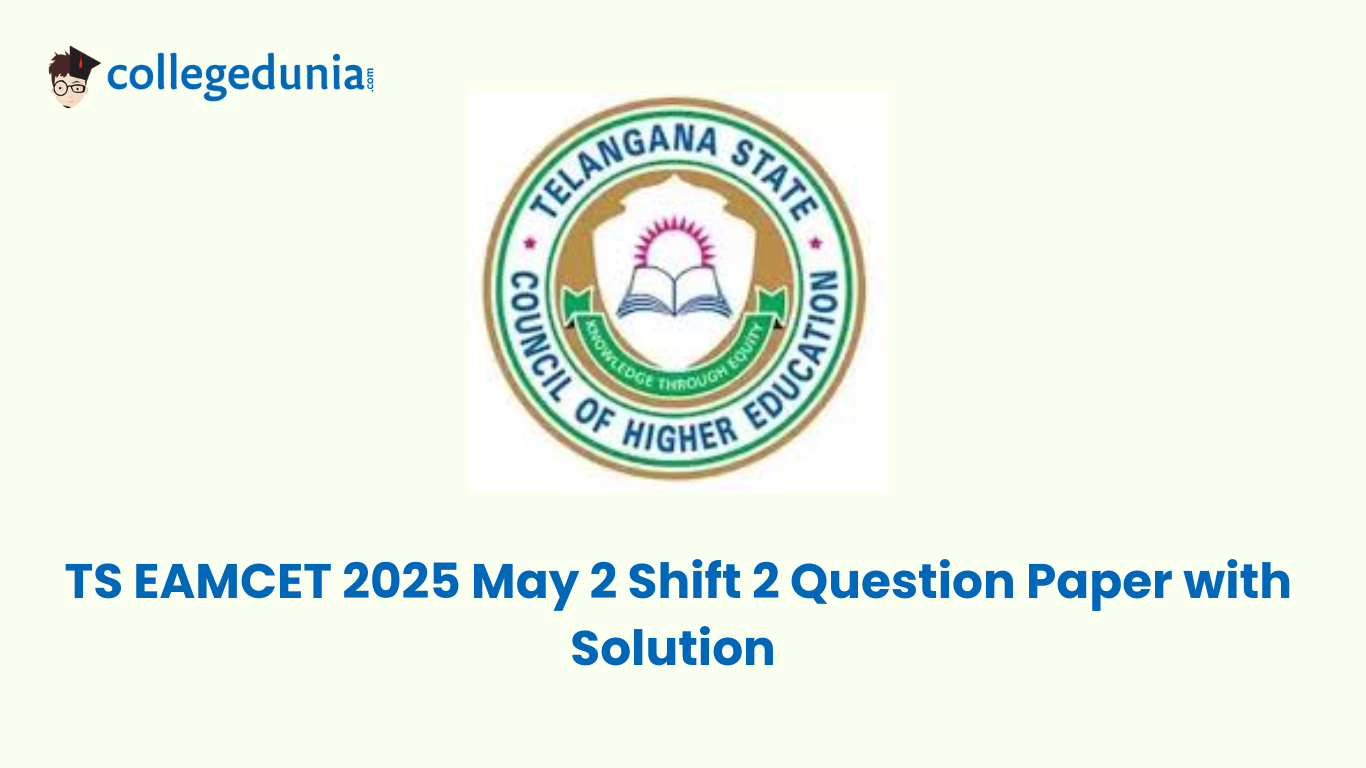The TS EAMCET 2025 Engineering exam was conducted on May 2, 2025, from 3:00 P.M. to 6:00 P.M. The overall difficulty level of the paper was moderate to tough.
The TS EAMCET Question Paper with Solution PDF is available here for download.
As per the exam pattern, the TS EAMCET 2025 exam was conducted in CBT mode with 160 MCQs in a total of 160 marks in 3 hours (180 minutes), 1 mark is awarded for each correct answer, and no negative marking for incorrect answers.
TS EAMCET 2025 Question Paper with Solution PDF
| TS EAMCET 2025 May 2 Shift 2 Question Paper with Answer Key | Download | Check Solution |

Find the value of \( k \) such that \( 5 \cdot 2^n - 48n + k \) is divisible by 24.
Which of the following statements are correct?
View Solution


TS EAMCET 2025 Previous Year Exam Analysis
As per the previous years' TS EAMCET Exam Analysis, it is expected that the difficulty level of TS EAMCET 2025 will be moderate in the difficulty level. Below is a year-wise comparison of the TS EAMCET Engineering exams from 2024 to 2022, including subject-wise difficulty, key topics, and student reactions:
TS EAMCET Engineering Exam Analysis (2024–2022)
| Year | Overall Level | Maths Difficulty | Physics Focus | Chemistry Nature |
|---|---|---|---|---|
| 2024 | Moderate | Lengthy, Moderate | Conceptual + Numerical | 65% NCERT-based |
| 2023 | Moderate to Tough | Application-based | 60% Numerical | 70% Direct from NCERT |
| 2022 | Easy to Moderate | Formula-based | 55% Theory-based | 75% Memory-based |
TS EAMCET 2025 Topic-Wise Weightage
TS EAMCET 2025 is expected to follow a question distribution pattern similar to the previous years. Maths has the most weightage at 80 questions, with Physics and Chemistry at 40 each.
Given below is the probable topic-wise weightage of every subject as per the previous year trends:
Mathematics
| Topic | Expected No. of Questions |
|---|---|
| Calculus | 10–12 |
| Algebra | 9–11 |
| Coordinate Geometry | 7–9 |
| Vector Algebra | 5–7 |
| Probability & Statistics | 4–6 |
| Trigonometry | 3–4 |
| Complex Numbers | 2–3 |
Physics
| Topic | Expected No. of Questions |
|---|---|
| Current Electricity | 4–5 |
| Thermodynamics | 4–5 |
| Laws of Motion | 3–4 |
| Work, Energy & Power | 3–4 |
| Semiconductor Devices | 3–4 |
| Oscillations & Waves | 2–3 |
| Modern Physics | 2–3 |
Chemistry
| Topic | Expected No. of Questions |
| Organic Chemistry | 8–10 |
| Physical Chemistry | 7–9 |
| Inorganic Chemistry | 6–8 |
| Environmental Chemistry | 2–3 |
| Surface Chemistry | 2–3 |
| Biomolecules & Polymers | 2–3 |



Comments